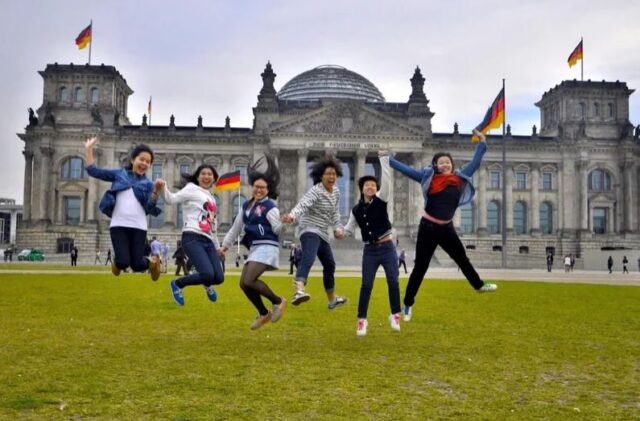60. Sri Lanka: Students here only have to stay in school until 14 years old
- Population: 21.89 million
- Education Index: 0.75
- Literacy Rate: 92.61%
- School Achievement: 0%
Having a population of 21.89 million means there are a lot of people in Sri Lanka who need an education. Thankfully, it seems that’s something it’s pulled off, with an education index of 0.75. This takes things like the average expected years of schooling for children and adults and is used by the Human Development Index.
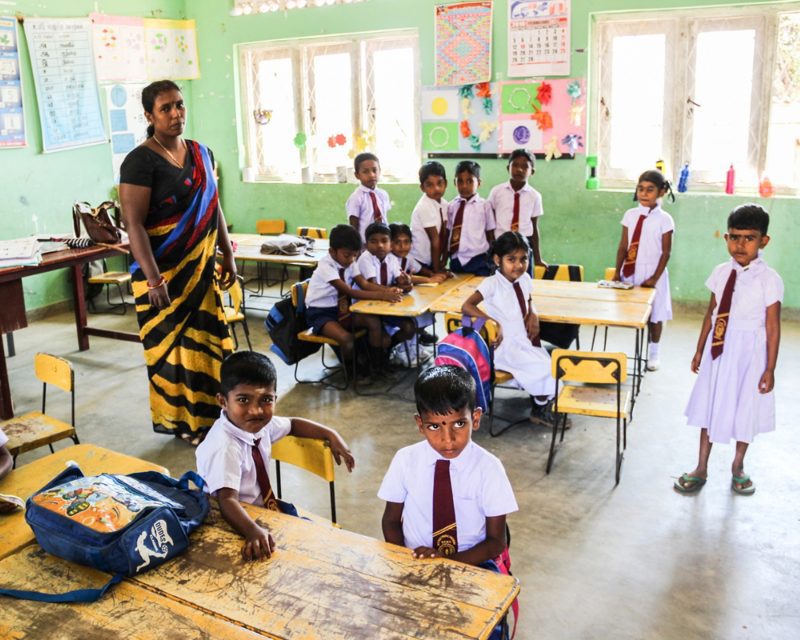

That number becomes even more impressive when you learn that education in Sri Lanka is only compulsory up to the age of 14. From there, teens can choose whether to voluntarily further their education or leave school for good in favor of an apprenticeship or a job. However, it’s believed just 10% to 12% of students stay on past 14.
59. Albania: Exams at the end of certain grades are needed before students can progress
- Population: 2.83 million
- Education Index: 0.75
- Literacy Rate: 97.55%
- School Achievement: 5.32%
Even though people in Albania must stay in school until they are at least 16 years old, things are broken into stages – and people need to pass several exams before they are allowed to progress through the education system. Much like the US, schools in Albania typically run from September or October to June or July.
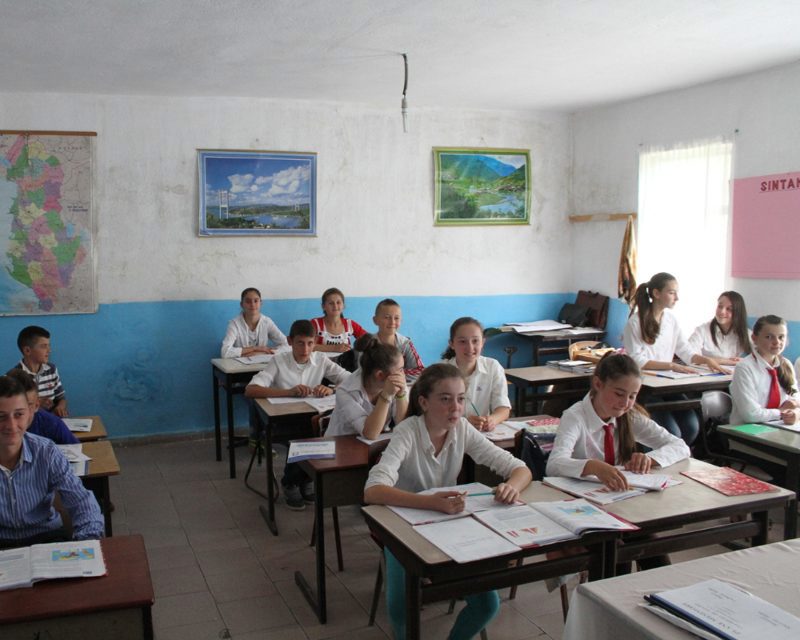

It’s estimated there are as many as 5,000 schools to cater to the 2.83 million population, where education is broken down into three stages. Elementary education runs until ninth grade, but from there, you need to pass exams at the end – and the same goes for the end of twelfth grade – before a student can progress any further.
58. Fiji: Going to school here is only free and compulsory for the first eight years
- Population: 938,057
- Education Index: 0.76
- Literacy Rate: 93.7%
- School Achievement: –
Even though Fiji’s education index of 0.76 ranks it the 58th most educated country in the world, the nation’s literacy rate of 93.7% sees it fall through the ranks to 120th place. A lot of that is down to how education works in Fiji, as it’s not entirely compulsory and is only free for the first eight years.
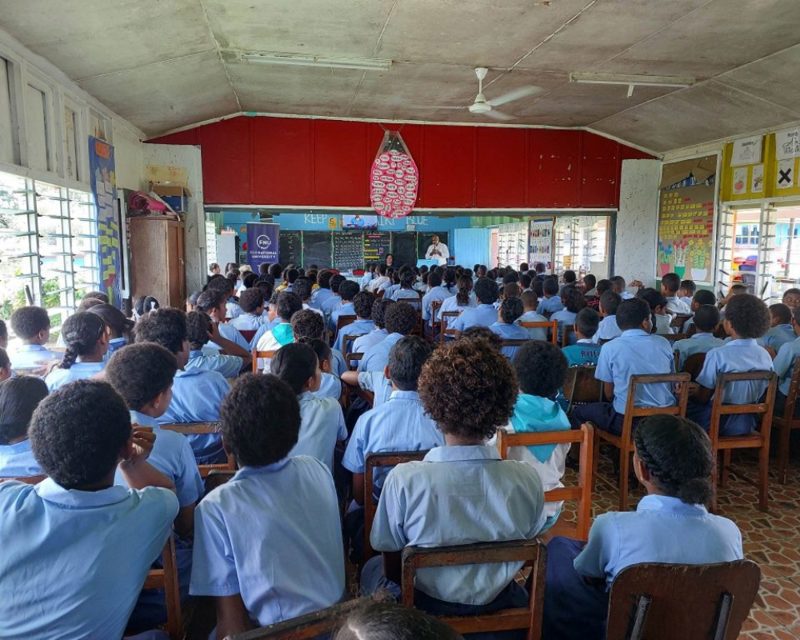

Plus, schools here are either run by the government, religious groups, or provinces, with a lot of the courses in the years past elementary school focusing on things like agriculture, carpentry, woodwork, metalwork, or home economics. Still, the Ministry of Education has been working hard to make education more affordable to the masses – and it’s seemingly paying off.
57. Uruguay: Teaching is a highly respected profession across the nation
- Population: 3.42 million
- Education Index: 0.77
- Literacy Rate: 98.44%
- School Achievement: 6.8%
Even though nursery is available in Uruguay for the first three years of a child’s life, education isn’t compulsory until someone turns four years old. From there, students are enrolled until they’re 17 years old, with Uruguay’s education system meaning it has the highest literacy rate of any country in South America at 98.44%.
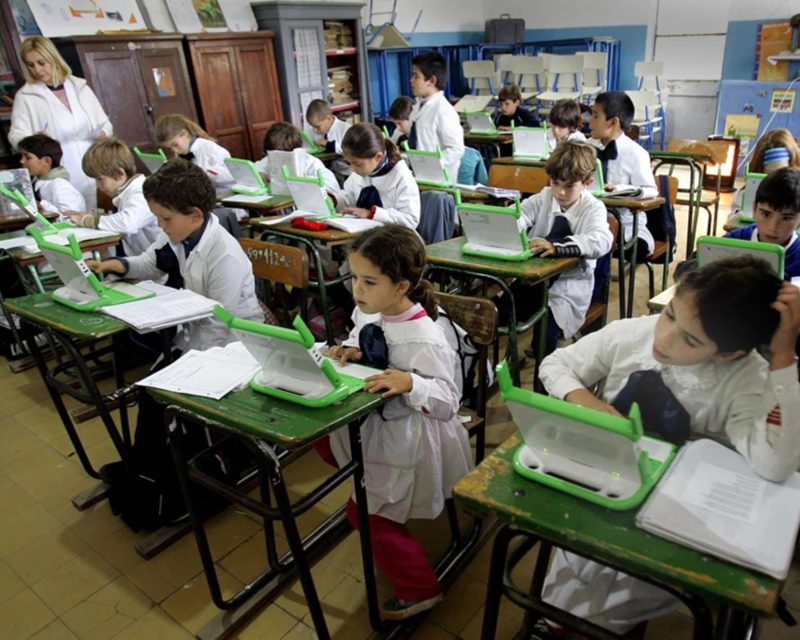

In fact, as well as ranking as the 57th most educated country in the world, Uruguay also ranks 58th in terms of its literacy rating. Teachers here aren’t necessarily hard to come by, as the profession is highly respected and often pretty well paid. Issues only begin to crop up when it comes to rural locations or a school’s supplies.
56. Romania: The compulsory years at school have rapidly risen since the ‘80s
- Population: 19.89 million
- Education Index: 0.77
- Literacy Rate: 98.76%
- School Achievement: 9.68%
The unrest across Romania at the end of the 1980s was a moment that shaped the nation, with its education system going through plenty of changes since then. Now, education is free, with students having to stay in school until they are at least 18 or 19. This is a huge rise from the previous seven years of compulsory education.
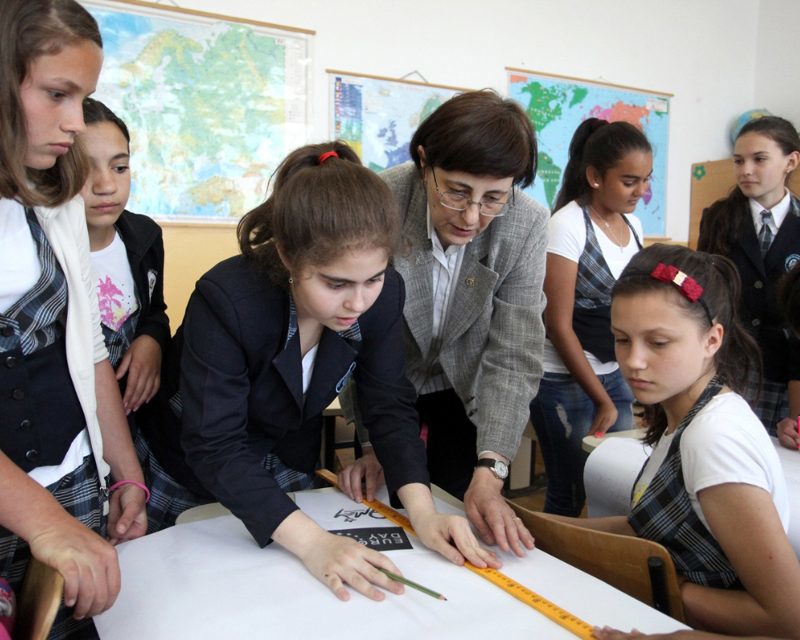

In 1996, there were around 30,000 schools across Romania. In 2013, there were just 7,20. Still, that doesn’t mean the country has been suffering – far from it. Romania opted to combine schools into larger facilities and has seen the nation rise up through the ranks to the 56th most educated country in the world.
55. Portugal: Having a high school achievement rate sees the nation rise through the ranks
- Population: 10.25 million
- Education Index: 0.77
- Literacy Rate: 95.43%
- School Achievement: 27.51%
The education index in Portugal puts the nation at 55th on the list of most educated countries in the world. However, having such a high school achievement rate of 27.51% – the number of students who achieve advanced learning outcomes – places Portugal at number 19 in the world. Like many other countries, education here is also free.
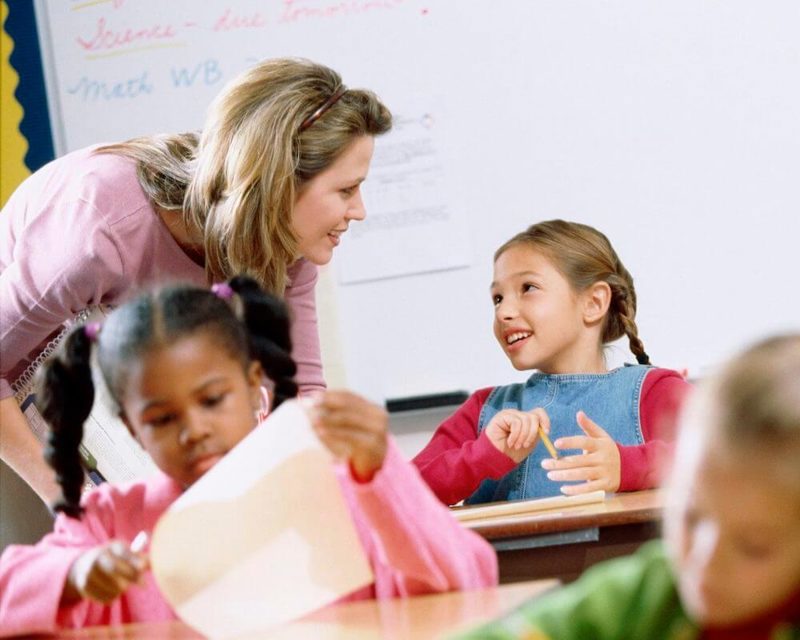

That is unless you register for a private school, but whatever the case, students must stay in school until they are 18 years old. Once someone is through with school, they can choose two forms of higher education: university – which works like most other nations – or polytechnic – a system that focuses on more career-based and practical skills.
54. Grenada: Annual harvests have a huge effect on the number of students at school
- Population: 126,183
- Education Index: 0.77
- Literacy Rate: 96%
- School Achievement: –
Each nation has its own way of life, and it seems the number of farms across Grenada really has an impact on the schooling system. At least, it kind of does. The nation has a relatively low population compared to many other countries, with just 126,183 people, perhaps contributing to its 54th place on the list.


Grenada has an incredibly high enrollment rate at school, with students allowed to leave when they’re 14 years old. Still, the amount of poverty across the island, the poor schooling facilities, and the need for students to have to help their families with farm harvests means there’s a 7% absenteeism rate among elementary school children.
53. Bahrain: Girls are far more likely to drop out of school here than boys
- Population: 1.49 million
- Education Index: 0.77
- Literacy Rate: 95.72%
- School Achievement: 6.89%
Did you know that Bahrain has the oldest public education system of any country in the Arabian Peninsula? The system was put in place in 1932 when just two schools for boys existed. From there, the government started opening separate schools for girls before universities and opportunities to further someone’s learning opened across the country in the 20th century.


Education here is free, but there still are private schools, and it was only made compulsory in recent years. Even so, Scholaro reports that just 40% of elementary school students reach the next stage, with girls far more likely to drop out of school than boys. Still, the government is working to turn these numbers around.
52. Tonga: Location and financial situations greatly affect someone’s schooling here
- Population: 107,773
- Education Index: 0.78
- Literacy Rate: –
- School Achievement: –
Depending on how you look at things will depend on what you make of the education system in Tonga. The country is the 52nd highest-educated country in the world, thanks to its education index of 0.78. The nation also has a high enrollment rate, but 2% of children either can’t afford school or live in remote areas.


It’s also estimated there are just 95 elementary schools across Tonga, but that might be a little less surprising when you learn there are fewer than 108,000 people in the country. Schools tend to dip in numbers as you climb up the education ladder, with just 22 high schools and an estimated 20 higher-education institutions.
51. Serbia: Education past elementary school all depends on someone’s tests and grades
- Population: 7.15 million
- Education Index: 0.78
- Literacy Rate: 98%
- School Achievement: 23.51%
Everything about Serbia’s statistics sees it near the top of the list when it comes to its educational system. After all, it has an education index of 0.78, ranking it 51st in the world; a literacy rating of 98%, ranking it 67th in the world; and a school achievement percentage of 23.51%, ranking it 21st in the world.
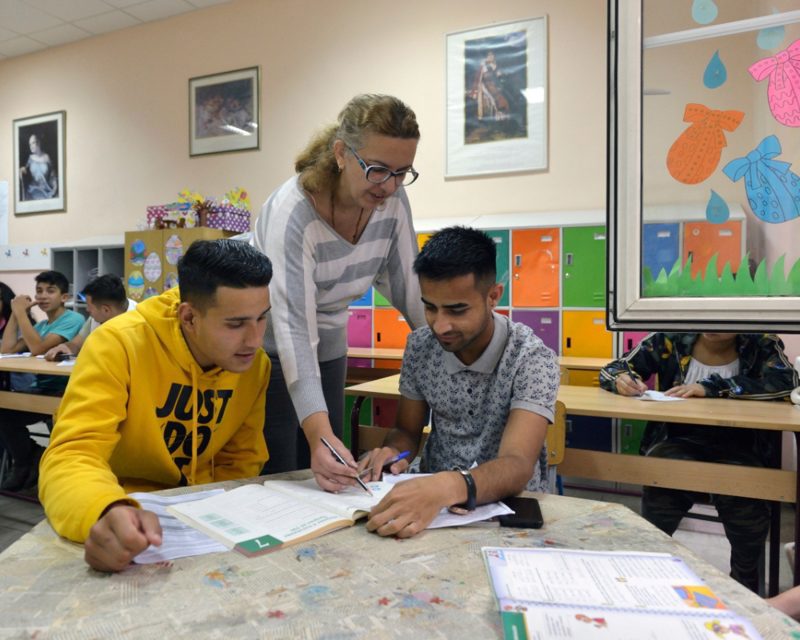

That’s even more impressive when you learn school is only compulsory up to 15 years old. At the end of elementary school, students take a test, with the points, their list of chosen schools, and their former grades deciding if they go to a professional school, a gymnasium, or a craft school, with each offering its own education.
50. Bulgaria: The nation has fought back against a shortage of teachers
- Population: 6.69 million
- Education Index: 0.78
- Literacy Rate: 98.39%
- School Achievement: 20.62%
Like many other nations, Bulgaria’s education is compulsory until someone turns 16 years old, with the schooling system resulting in a literacy rate of 98.39%. That’s despite the fact that the country’s upset and unrest – which resulted in a low birth rate for several years – resulted in fewer students and, eventually, teachers for a period.
50. Bulgaria: The nation has fought back against a shortage of teachers
- Population: 6.69 million
- Education Index: 0.78
- Literacy Rate: 98.39%
- School Achievement: 20.62%
Like many other nations, Bulgaria’s education is compulsory until someone turns 16 years old, with the schooling system resulting in a literacy rate of 98.39%. That’s despite the fact that the country’s upset and unrest – which resulted in a low birth rate for several years – resulted in fewer students and, eventually, teachers for a period.


Private schools really started to boom in the 1990s, with the popularity seeing higher education get a reorganization throughout the decade. By 2002, there were 42 colleges and universities found across Bulgaria, with 4.9% of the nation’s national budget going toward education by the following year. Thankfully, the stats show it seems to be paying off.
49. Barbados: The nation has invested billions of dollars into reforming the education system
- Population: 281,995
- Education Index: 0.78
- Literacy Rate: 99.7%
- School Achievement: –
Having a literacy rate of almost 100% has seen Barbados rapidly climb through the ranks, as the nation is now the 23rd highest literate country in the world. Having a lower population than most countries certainly helps, but that’s not all. It’s estimated Barbados has also spent a staggering $15 billion on education since 1966.
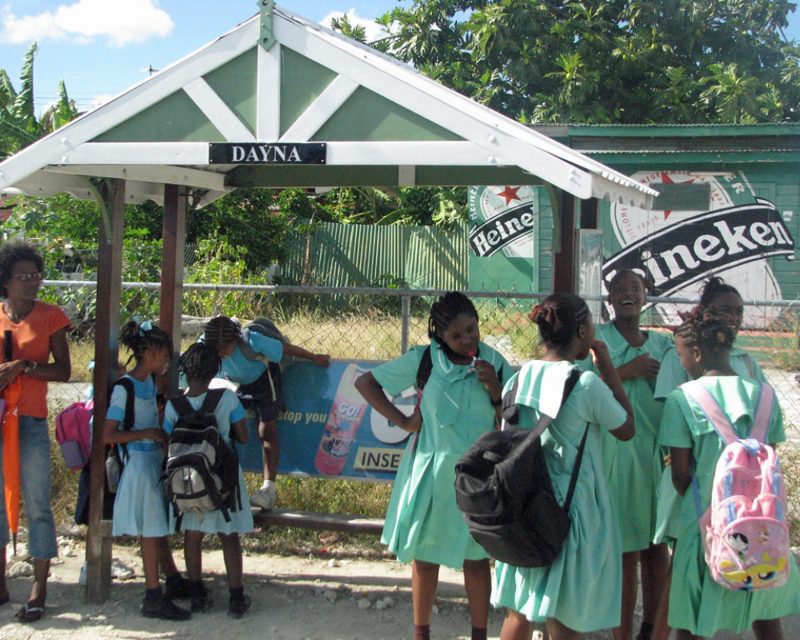

Many of that came in 2000 when a joint project with various banks and the government saw the education system get repairs to school buildings, a revamp to teaching methods, more training for all teachers, and reform into Barbados’ society. The investments appeared to have paid off well so far, even with students allowed to leave school at 16.
48. Saudi Arabia: The nation has been criticized for what it teaches and the experience of teachers
- Population: 34.95 million
- Education Index: 0.79
- Literacy Rate: 94.84%
- School Achievement: 1.64%
Education in Saudi Arabia might be more important than many people realize. After all, the average spending per nation on education is 4.6% of a nation’s budget. Saudi Arabia? Almost double at 8.8%. This is to help the population of 64.95 million, resulting in an education index of 0.79 and earning it the 48th spot.
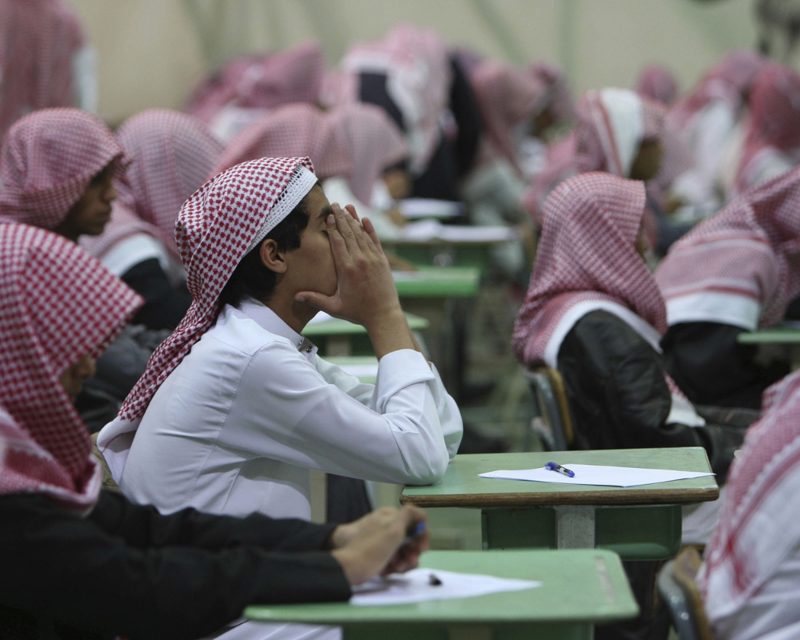

In the 1980s and ‘90s, education in Saudi Arabia was highly criticized for having poorly trained teachers and a low retention rate. There have been continued complaints against the nation as it allegedly heavily focuses on religion, but Saudi Arabia claims it’s been working hard on funding higher education since the ‘70s when things really boomed.
47. Italy: While the universities are some of the best, there is still a lot of room for improvement
- Population: 58.87 million
- Education Index: 0.79
- Literacy Rate: 99.02%
- School Achievement: 15.48%
Having both a public and private education system has seen Italy become the 47th most educated country in the world, but that’s not all. The nation also offers free education, and is compulsory for people up to 16 years old. However, things appear to vary greatly between schools in the northern and southern regions of the country.
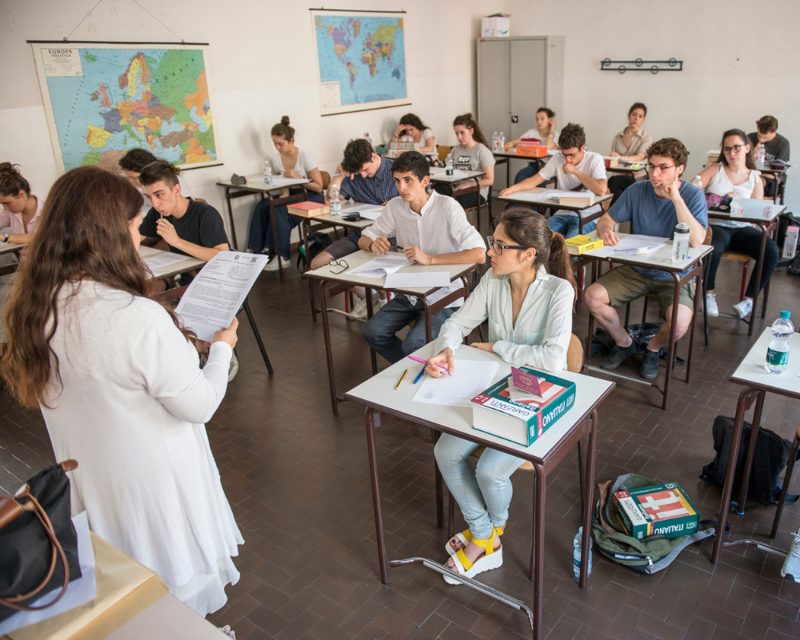

While northern schools are near average, southern schools tend to fall behind. Although literacy is a big part of schooling in Italy, the nation’s also been criticized for its lack of discipline and absences in classrooms, especially compared to other countries in the Organization of Economic Co-operation and Development. Even so, many universities rank among the best in the world.
46. Cuba: The late-’50s saw women get many more opportunities in their education
- Population: 11.19 million
- Education Index: 0.79
- Literacy Rate: 99.71%
- School Achievement: 27.43%
Cuba might fall in 46th place on the list of most educated countries, but it ranks at the 21st spot when it comes to its literacy rate – 99.71% – and school achievement – 27.43%. School here is compulsory from six to 15 or 16 years old, with all students wearing a uniform, with different colors representing the grades.
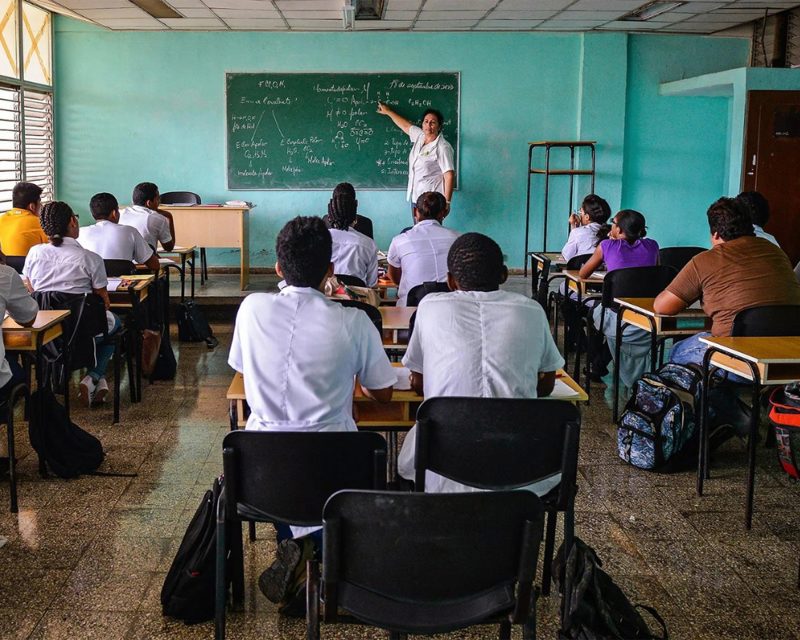

In 1959, things really changed for female students. For years, most women had lived as housewives or on the family’s farm, meaning they had few educational options. Thankfully, things have really turned around and changed the nation’s literacy rate among all students, as well as the school achievement and education index for all 11.19 million nationals.
45. United Arab Emirates: The nation has come a long way in recent years with its education system
- Population: 9.51 million
- Education Index: 0.8
- Literacy Rate: 92.99%
- School Achievement: 12.15%
Even though it’s not in the top ten educated countries, the United Arab Emirates has come a long way in recent years. In fact, the government now dedicated 35% of its federal funding toward education, really focusing on improving literacy rates and educational opportunities for women living across the nation. Thankfully, it’s paid off so far.


Education in the UAE is divided into four tiers, with students staying in school until they are 17 years old. Increasing teacher training means teachers now have more resources to hand. Plus, the government realized a lack of English was creating employment barriers for nationals, something that’s since been introduced into the education system in the UAE.
44. Ukraine: The nation spends years helping students develop life skills in the early years
- Population: 37.74 million
- Education Index: 0.8
- Literacy Rate: 99.76%
- School Achievement: 11.85%
Ukraine has a slightly lower school leaving age than other nations, with people able to leave school when they are just 15 years old. However, a lot of focus goes on creating and developing skills that can be used throughout someone’s life. For example, the first four years of elementary school start at six years old.
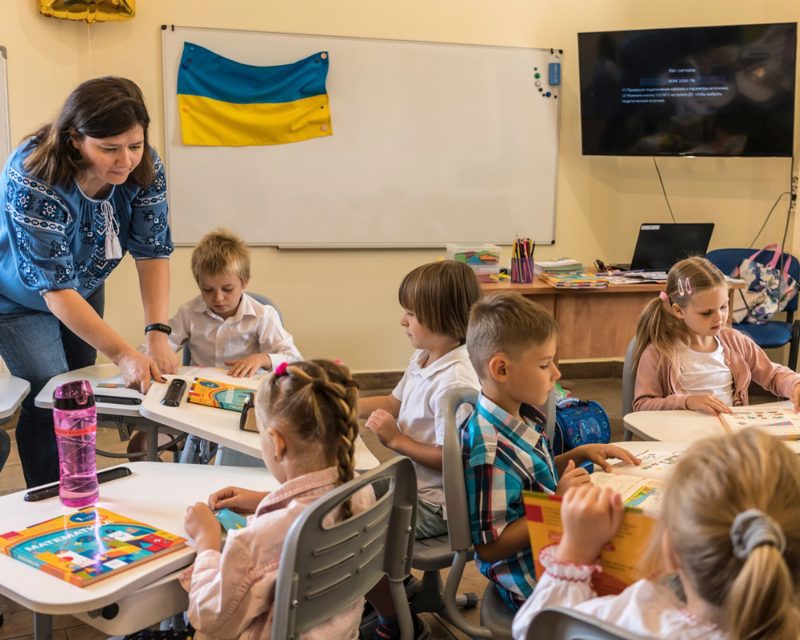

Here, students typically spend their time learning about the sciences and art from a practical standpoint. Things change when students work through the school system, with most exams coming when people are between 15 and 17 years old. From there, people can either enter the working world or apply for university to expand their education.
43. Montenegro: Education after elementary school is split into three options
- Population: 626,485
- Education Index: 0.8
- Literacy Rate: 98.72%
- School Achievement: 5.43%
Having such a small population compared to other nations in Europe certainly helps when it comes to boosting Montenegro’s spot on the list of most educated countries. After all, it has fewer students to teach, resulting in an overall education index score of 0.8. In Montenegro, elementary schools last for nine years before students have to make a decision.
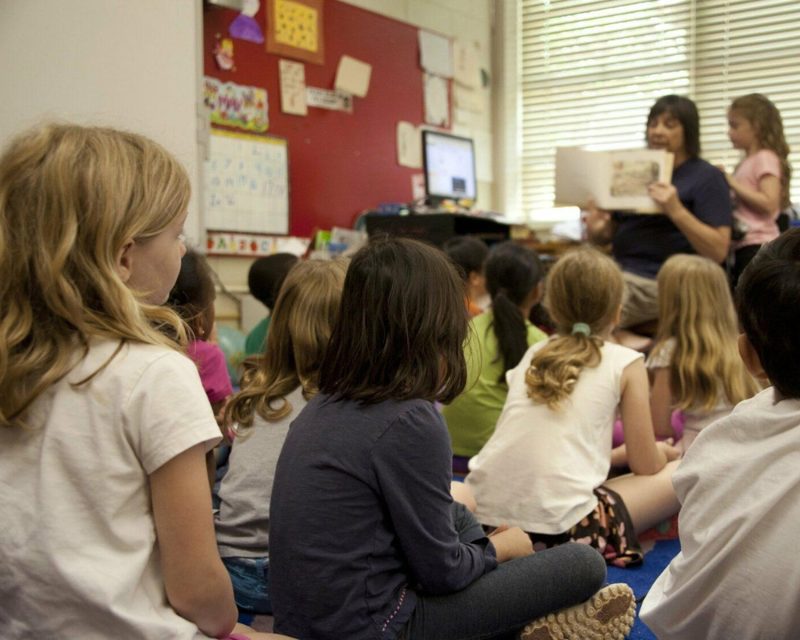

There are actually three types of secondary schools: either a gymnasium – which lasts four years and typically prepares someone for college – a professional school – a four-year course that specializes in certain skills – and vocational schools – which lasts three years and narrowly focuses on a set vocation. The result? 5.43% school achievement and a literacy rate of 98.72%.
42. Luxembourg: A lot of emphasis goes toward studying at university
- Population: 654,768
- Education Index: 0.81
- Literacy Rate: 100%
- School Achievement: 19.55%
When it comes to Luxembourg’s literacy rate, it’s hard to beat a number like 100%. That means everyone in the country 15 years or older can read and write to a level where they can create a statement about their everyday life. It’s an impressive stat and certainly helps toward their 42nd place on the list of most educated countries.
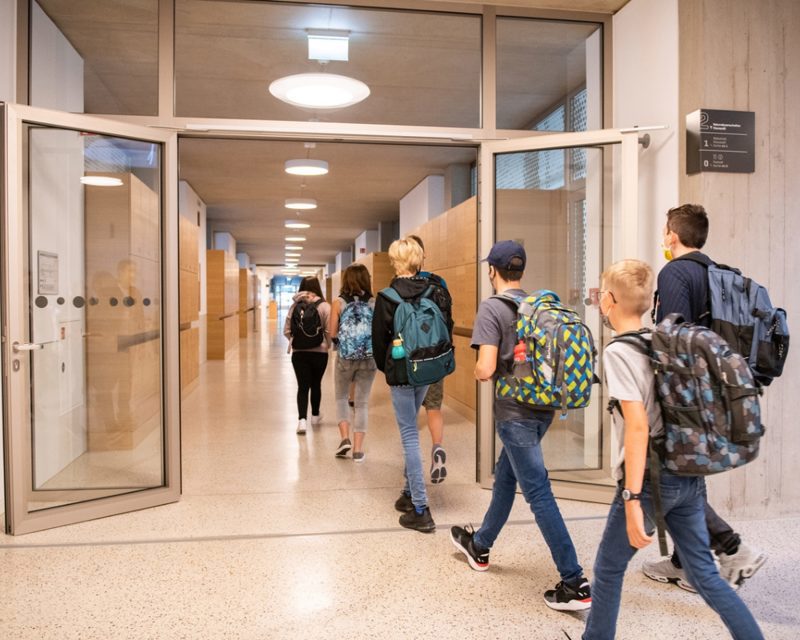

Most schools here are completely free and run by the state, with people in Luxembourg having to stay in school until they are at least 16 years old. Even so, a lot of emphasis is put on higher education across the nation, with courses helping people in secondary education learn everything they need to apply for and thrive at college.
41. Croatia: Education across the nation is mostly free, including university courses
- Population: 4.02 million
- Education Index: 0.81
- Literacy Rate: 99.27%
- School Achievement: 13.31%
One of the incredible things about the education system in Croatia is that most of the primary and secondary schools are free because it’s sponsored by the government, but that’s not all. Plenty of higher education is also free, as the government funds public universities, meaning they can offer free enrollments depending on someone’s prior grades.


Things have come a long way since the introduction of free education. In 1961, 85.6% only had an elementary school education or less. That number dropped to 30.8% in 2011. In 1961, only 1.8% of people had a higher education, a percentage that rose to 16.4% in 2011 and will likely continue to rise.
40. Chile: Plenty of help is in place for those looking to work or further their education
- Population: 19.63 million
- Education Index: 0.81
- Literacy Rate: 96.63%
- School Achievement: 6.05%
Things are pretty different in Chile when it comes to the school year compared to plenty of other places in the world. To start, the school year begins in February or March and runs through to July until winter break. From there, school is in session until November or December, which concludes with the nation’s summer vacation.
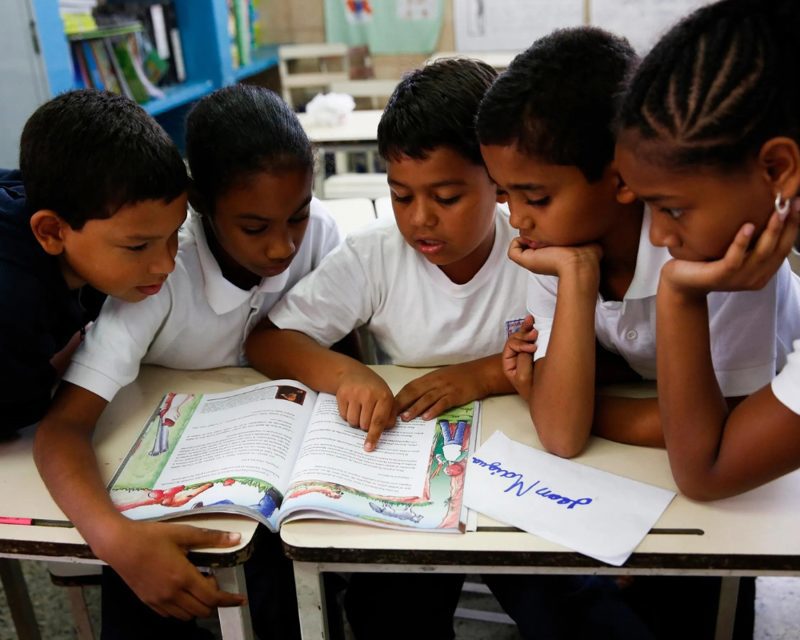

That’s not all, as higher education is highly encouraged through scholarships and government-funded programs that offer students cheaper transport, a monthly budget, and a debit card for food, depending on someone’s grades. Even before college, there are courses to teach practical skills to those looking to work instead of continuing on with their education at school.
39. Hungary: Someone’s grades dictate where they will continue their education
- Population: 10.16 million
- Education Index: 0.82
- Literacy Rate: 99.38%
- School Achievement: 29.4%
Having a school leaving age of 16 in Hungary makes it similar to plenty of other places in the world. However, students have to start preschool kindergarten at just three years old, meaning the nation offers one of the longest compulsory school runs. Amazingly, Hungary still has a 29.4% school achievement and those heading to higher education.
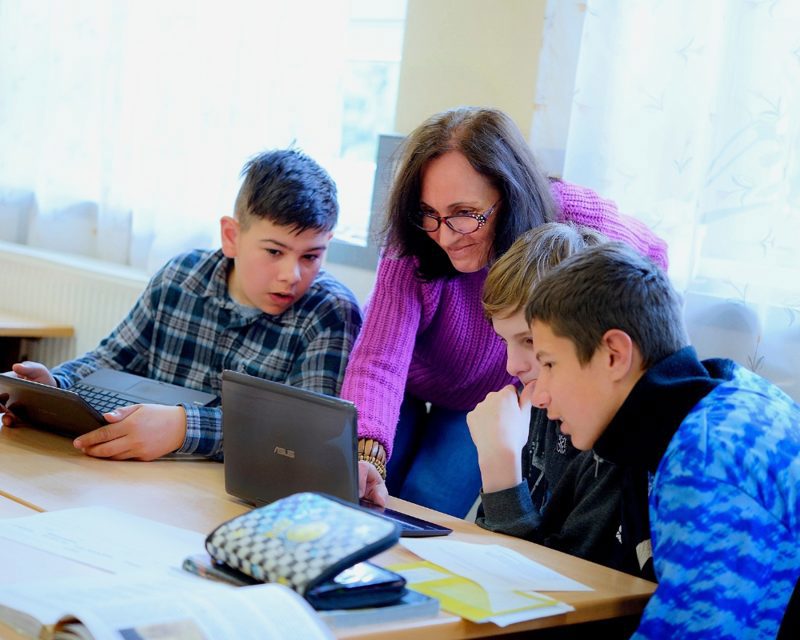

A lot of this is down to the fact Hungary predominantly offers free university courses, with 67 colleges and universities found across the nation. Plus, earlier schools are divided into three different academic levels after someone completes elementary school, depending on a student’s grades and whether or not they are deemed to be a “gifted” student.
38. France: Certain subjects have been declining in the nation in recent years
- Population: 64.76 million
- Education Index: 0.82
- Literacy Rate: 99%
- School Achievement: 15.8%
Like many other nations, it’s common for both parents to work in France, meaning they need childcare. That’s why the average age that people start school is just two years old. However, they don’t start elementary school until they are six years old, with preschool an obligatory part of life in France from three years old since 2022.
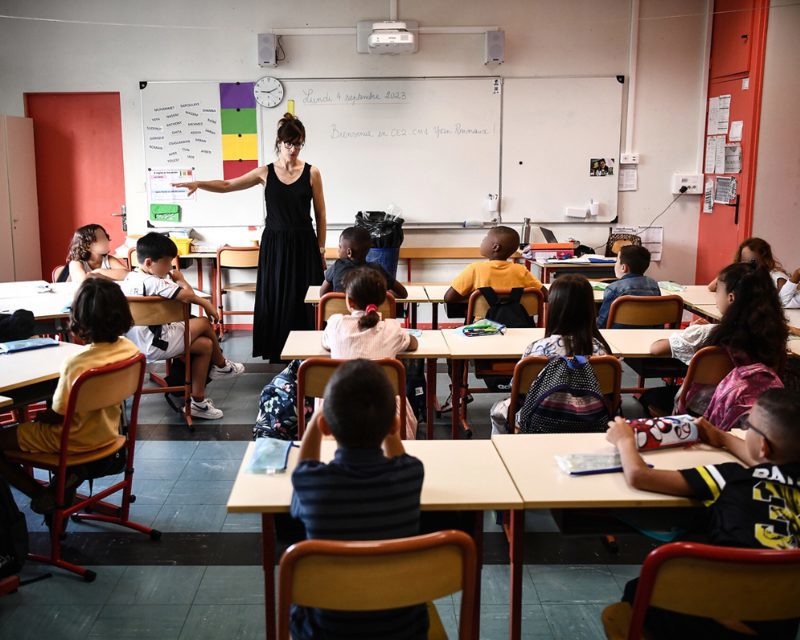

The first two years of French school are all about learning how to be a student and the skills they need to be in the classroom. That changes as the years pass, with students learning basic skills and subjects. The issue? The nation’s rankings in science, math, and literacy have been declining over the years, resulting in its 38th spot.
37. Russia: Having such a large population hasn’t stopped the nation from educating most people
- Population: 144.44 million
- Education Index: 0.83
- Literacy Rate: 99.7%
- School Achievement: –
Since 2009, it’s been compulsory for people in Russia to complete nine years at school, with students joining when they are six or seven years old. Even so, most students stay in school for eleven years, but things change when it comes to universities. In most countries, people’s past grades determine whether or not they are accepted.
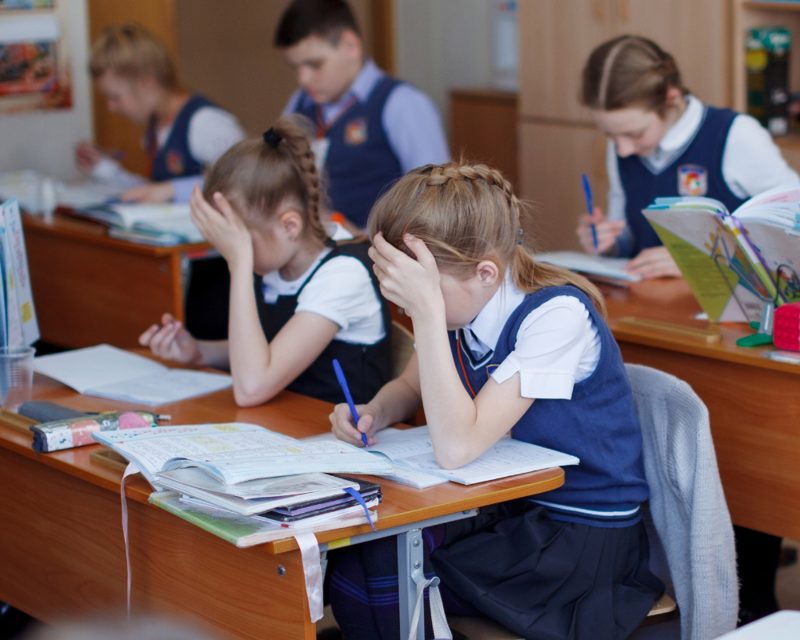

However, most colleges in Russia have their own exams people need to pass before they are accepted. Having such a large population makes the nation’s education index of 0.83 even more impressive, especially when you consider almost 100% of people over 15 years old have a literacy rate which means they can write and talk about their lives.
36. Spain: The nation is working to improve its school system to tackle unemployment
- Population: 47.52 million
- Education Index: 0.83
- Literacy Rate: 98.11%
- School Achievement: 16.14%
From three to 16 years old, it’s compulsory for people in Spain to go to school. Thankfully, this doesn’t cost people a dime, as education is free to all children. Here, students have their school years split into two stages: Primaria – six to 12 years old – and Secundaria – 12 to 16 years old. Even so, things are changing.
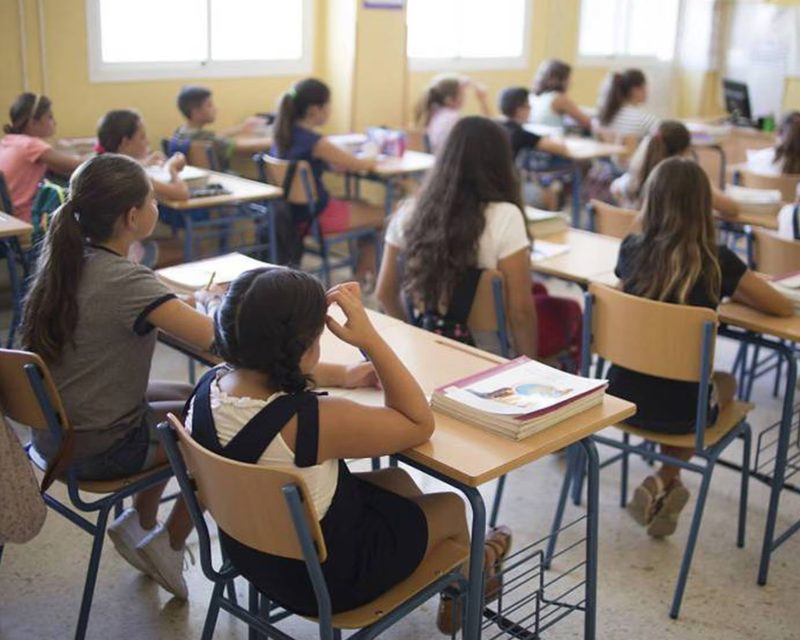

The unemployment rate in Spain has been declining over the years, dropping from 17.78% in 2021 to 13.01% in 2022. However, the school system is looking to reform the way it teaches students to see that number drop even more and offer more modern approaches to teaching by now offering a wider range of subjects.
35. Slovakia: There was once a time when Saturday school was a thing across the nation
- Population: 5.8 million
- Education Index: 0.83
- Literacy Rate: 99.6%
- School Achievement: 15.9%
Coming in as the 35th most educated country in the world is Slovakia, but there are other areas that the country thrives. While it lands at 46th on the list of school achievement percentages – with 15.9% – Slovakia is actually 25th in the world when it comes to its literacy rate, with a total of 99.6%.
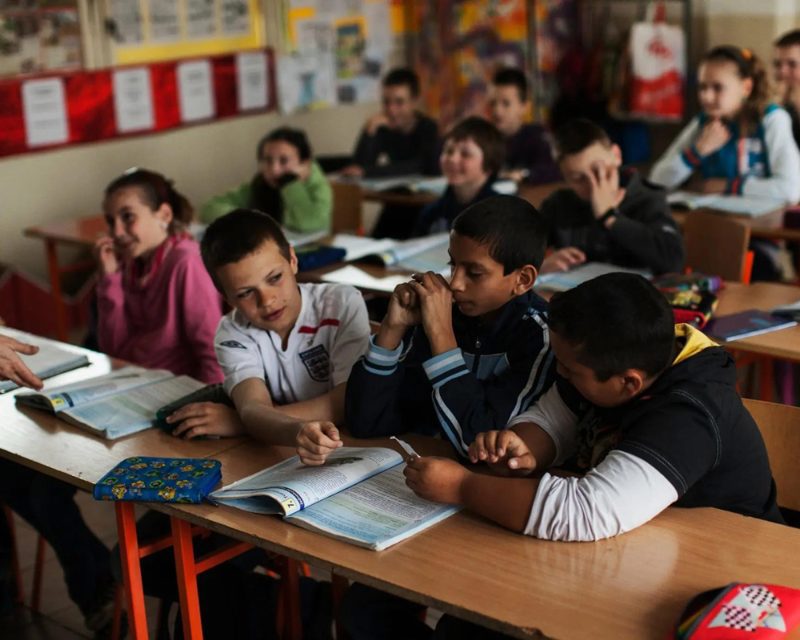

Here, students must complete ten years of compulsory education, but things were once even longer for students. Before the 1980s, students were required to head to Saturday school, too, but that has since been abolished. Apparently, there is also a tradition in Slovakia of teachers giving students marks on the “good” end of the scale.
34. Malta: Almost a third of students attend church-run private schools across the nation
- Population: 535,064
- Education Index: 0.83
- Literacy Rate: 94.07%
- School Achievement: 19.25%
Even though schools are run by either private sectors, the state, or the church, the government are the ones in control when it comes to Malta’s education system. They are the ones to ensure that education is available to everyone, with a large focus being put on people’s moral and intellectual development to create citizens who contribute toward the economy.


School in Malta is compulsory for people up to 16 years old, with people taking a special exam at 11 years old. This is then used to determine where someone will study for their final years at school, something that’s repeated at 18 to decide where someone will go to university. The twist? 30% of students are in private education.
33. Liechtenstein: Having such a small population means there are few high schools here
- Population: 39,584
- Education Index: 0.83
- Literacy Rate: 100%
- School Achievement: 32.06%
Having a literacy rating of 100% puts Liechtenstein at the top of the list in that regard. That’s not all. Having a school achievement of 32.06% means the nation just about makes it into the top ten, with Liechtenstein earning an education index of 0.83 and the 33rd spot on the list of the most educated countries.


Bordering Switzerland – and having such a small population – means the country has an educational system similar to its neighbor. Having so few students means there are just nine public high schools in Liechtenstein, with students starting school when they are five or six years old and typically leaving when they’re 18 or 19 years old.
32. Cyprus: Parents have two options of teaching when it comes to their children’s education
- Population: 1.26 million
- Education Index: 0.83
- Literacy Rate: 99.06%
- School Achievement: 25.02%
For the most part, Cyprus sits around the same ranking when it comes to the nation’s education index, literacy rate, and school achievement. The nation has a school leaving age of 15 years old. However, parents have two different paths to choose when it comes to an education for their children. On one hand, there are public or private schools.
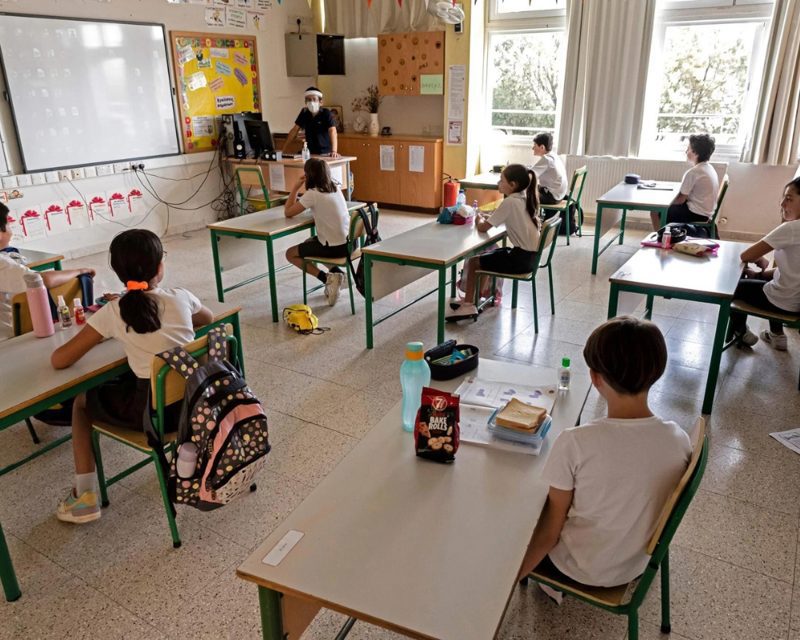

Public schools are paid for by the state, with the nation’s taxes used to ensure public universities are free to students, too. On the other hand, there is independent schooling. This means that parents can choose to educate their children by any suitable means, yet still results in the nation’s 32nd spot on the list.
31. Kazakhstan: Teachers here have long stated they are incredibly underpaid
- Population: 19.61 million
- Education Index: 0.84
- Literacy Rate: 99.79%
- School Achievement: 32.64%
Elementary school in Kazakhstan typically starts a little later for students, with most enrolling when they are seven years old and some only starting when they are eight. Although the nation offers kindergarten, there has been a decline in the number of available options, with a lack of funding and quality largely to blame. Sadly, that’s not all.
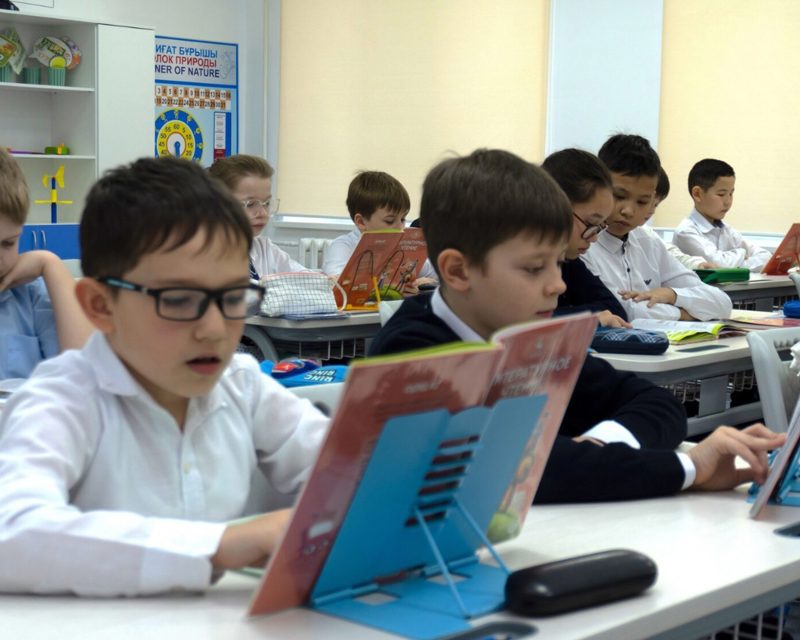

Kazakhstan has also been accused of hugely underpaying its elementary and secondary school teachers to the point that more than 30,000 teachers walked away from their jobs in 1993 to find better-paying careers. Even so, things are on the up for Kazakhstan, especially when it comes to people searching for higher education and the nation’s literacy rate.
30. Belarus: Everyone needs to earn a certificate to confirm they have graduated from school here
- Population: 9.5 million
- Education Index: 0.84
- Literacy Rate: 99.72%
- School Achievement: –
When it comes to schooling in Belarus, students have two options: to go to private school or to go to one of the government-funded public schools. Even with a literacy rate of 99.72%, Belarus ranks at number 19 in the world in that regard, but it’s still nothing to scoff at, especially with a population of 9.5 million.


Elementary school here typically starts when someone is six, with students able to leave when they are 15. Still, students have to pass a basic educational curriculum and earn their certificate from the state before they can fully graduate. Only then can people apply for higher education and take three entrance exams, but this does come at a cost.
29. Japan: Teachers across the nation are often highly specialized in their subjects
- Population: 123.29 million
- Education Index: 0.85
- Literacy Rate: 99%
- School Achievement: 58.01%
Cementing its place in the top-sixth of the most educated countries in the world is none other than Japan, a title that’s even more impressive when you learn there are 123.29 million people living across the nation. One of the biggest things that stands out here is the school achievement of 58.01%, seeing Japan come in fifth place.
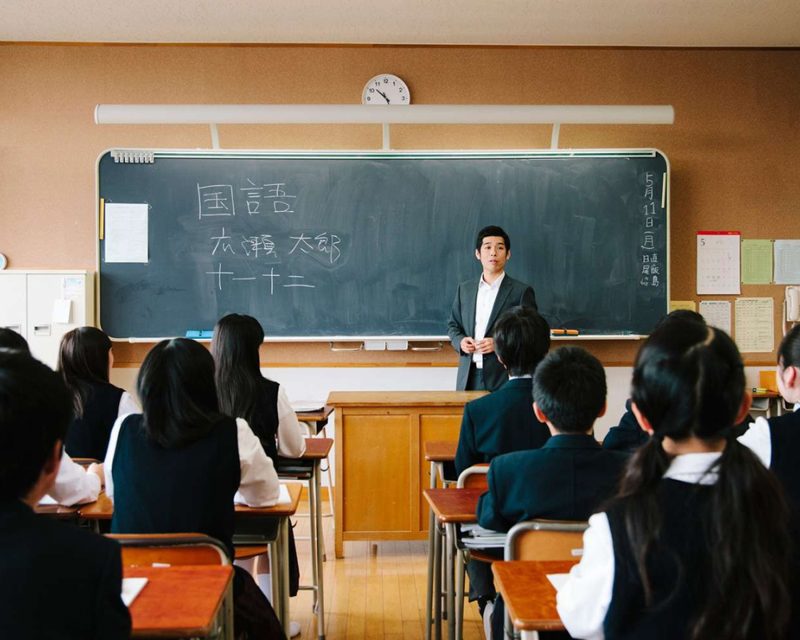

Even though compulsory education ends in ninth grade, fewer than 2% drop out. In fact, by 2012, 98.3% of students ended up reaching senior education. Even though classes are large – averaging 38 students – 79% of teachers graduate from a four-year college course and typically specialize in their respective subject, even in elementary schools, with homeroom teachers doubling as counselors.
28. Greece: Education is highly important to students and the government across the nation
- Population: 10.34 million
- Education Index: 0.85
- Literacy Rate: 95.29%
- School Achievement: 11.52%
When it comes to education, Greece takes things pretty seriously. After all, it’s illegal here for students to use their mobile phones while anywhere on school grounds or to use recording technology, such as smartwatches. That’s not all. Most students are also signed up for private tutoring classes or one-to-one tutors to further their education.
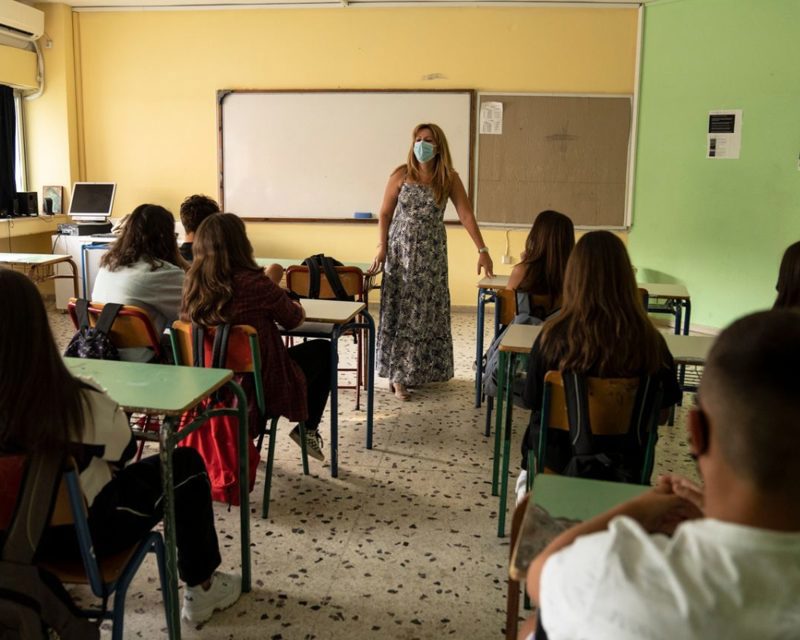

Even though students can leave school in Greece at 15 years old, they must always study religious subjects throughout their time at school unless their guardians fill out a declaration that excludes them from these lessons. Perhaps that’s how Greece has ended up with an education index of 0.85 and a literacy rate of 95.29%?
27. Palau: Being so small hasn’t stopped the nation’s education from being so mighty
- Population: 18,058
- Education Index: 0.86
- Literacy Rate: 99.52%
- School Achievement: –
Nestled off the coasts of the Philippines and Papua New Guinea is the small island of Palau. Here, just 18,058 people call it their home, but the number of people certainly doesn’t hold people’s education back. After all, Palau is the 27th most educated country in the world. Here, the nation has adopted the US’s grade system.


It also means that students start school at six years old and can leave when they are 16, but there is the chance to stay in secondary education until they are 19 years old. Being so small means there are 20 elementary schools, with two-thirds of the population attending one of the two public secondary schools available.
26. Georgia: There was once a time when thousands of youngsters weren’t going to school
- Population: 3.73 million
- Education Index: 0.86
- Literacy Rate: 99.76%
- School Achievement: 9.16%
One of the things that stands out about Georgia’s education system is the fact that the holidays can be extended at the discretion of the school principal. That’s right; they have the power to extend the winter break for students or to allow the school to close at harvest time to enable students to help their families at home.
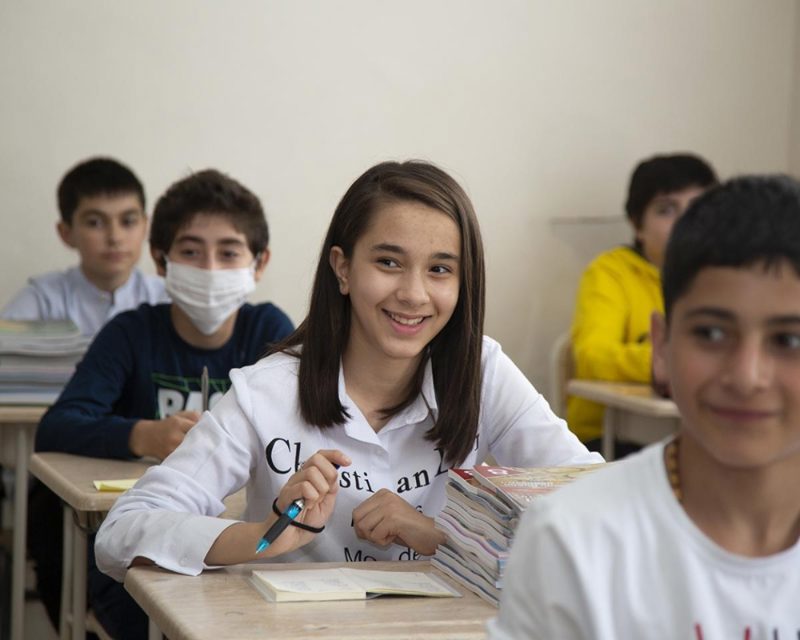

In 2001, it was reported almost 48,000 students weren’t attending elementary school, but things have come a long way. Now, the nation has an incredibly high literacy rate – sitting at 99.76% – and an education index of 0.86 that blows most other countries out of the water. Sometimes, it just takes something to turn it all around.
25. Argentina: Education here is largely paid for to avoid commercializing schools
- Population: 45.77 million
- Education Index: 0.86
- Literacy Rate: 98.09%
- School Achievement: 2.09%
Even though Argentina does have private schools, there are plenty of ways that the state will subsidize the cost. Why? The nation wants to create equal chances for students and doesn’t believe that education should become commercialized or only be available to those who have the money to cover the costs. Amazingly, it works incredibly well.


In fact, Argentina has the second-highest literacy rate in South America and has created nine new universities in the last decade. As a result, there are 68% more students enrolled in higher education. To make matters even better, even universities in Argentina are free to encourage as many students to further their education as possible.
24. Poland: There are ways to say in school here for up to 22 years if you choose to do so
- Population: 41.03 million
- Education Index: 0.87
- Literacy Rate: 99.79%
- School Achievement: 26.83%
Students in Poland can attend kindergarten, but heading to school isn’t compulsory until someone turns seven years old. If they do head to pre-elementary school, students typically spend their days learning about how to behave at school and the things they can expect from the educational system. Once in school, Poland has compulsory education until someone is 18.
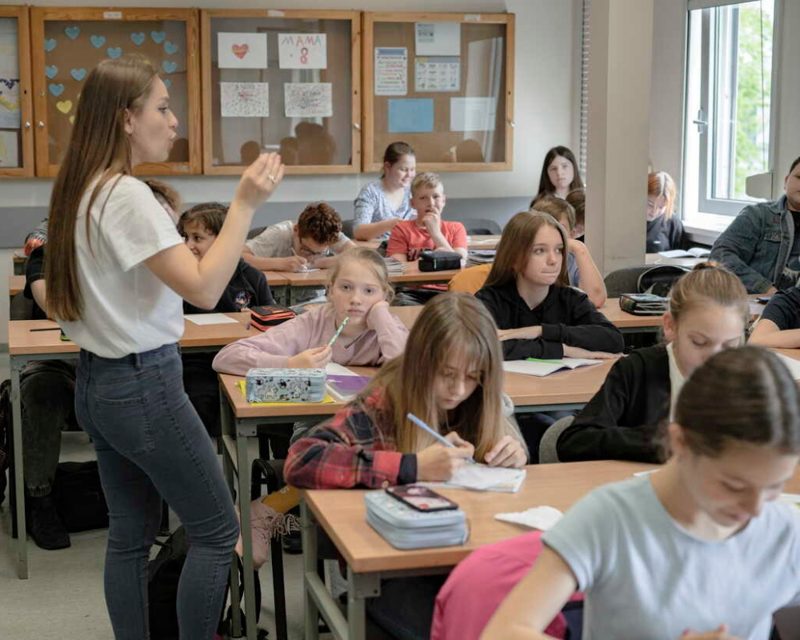

Amazingly, the Polish Ministry of Education was the first ministry of education on the planet, and the nation has long been praised for the progress it’s made in literacy, science, and math. In fact, with so many ways to further your education at the end of school, Poland offers 22 years of continuous, uninterrupted schooling.
23. Austria: Opposing views have sometimes led to differing opinions on education
- Population: 8.96 million
- Education Index: 0.87
- Literacy Rate: 98%
- School Achievement: 23.35%
For nine years, students in Austria must attend compulsory education. However, things are a lot more varied here than the type of education that so many of us are used to elsewhere in the world. For one, there is a lot of focus on vocational teachings as well as technical subjects that we would usually expect to see.


Still, there have been some debates about education in Austria throughout the years. Opposing parties often want completely different things from the school systems, which can lead to some conflicts along the way. However, it doesn’t appear to have held Austria back, especially as the nation narrowly misses out on a top-20 spot in terms of educated countries.
22. Latvia: Learning in two languages is common across the nation
- Population: 1.83 million
- Education Index: 0.88
- Literacy Rate: 99.89%
- School Achievement: 16.04%
When it comes to lengthy runs at school, Latvia is certainly up there. After all, the country has two years of preschool – starting at five years old – and another nine years of education – typically ending when someone is 15 or 16 years old. However, things took a turn in 2001 when more students stopped heading to elementary school.


Some of this was down to various schools being closed in parts of Latvia, but things have started to pick up again. One major thing about schools in Latvia is that most are taught in two languages, typically relying on 60% Latvian and 40% a minority language. This is partly down to how many foreign students are enrolled in Latvia.
21. Israel: Having an education is highly important to most nationals
- Population: 9.17 million
- Education Index: 0.88
- Literacy Rate: 97.1%
- School Achievement: 29.19%
One thing many people don’t know about Israel is just how much education is highly valued across the country. After all, for so many years, it’s been believed that having a higher education is the way to achieve a better lifestyle and be more a part of society, resulting in Israel just missing out on a top-20 spot.
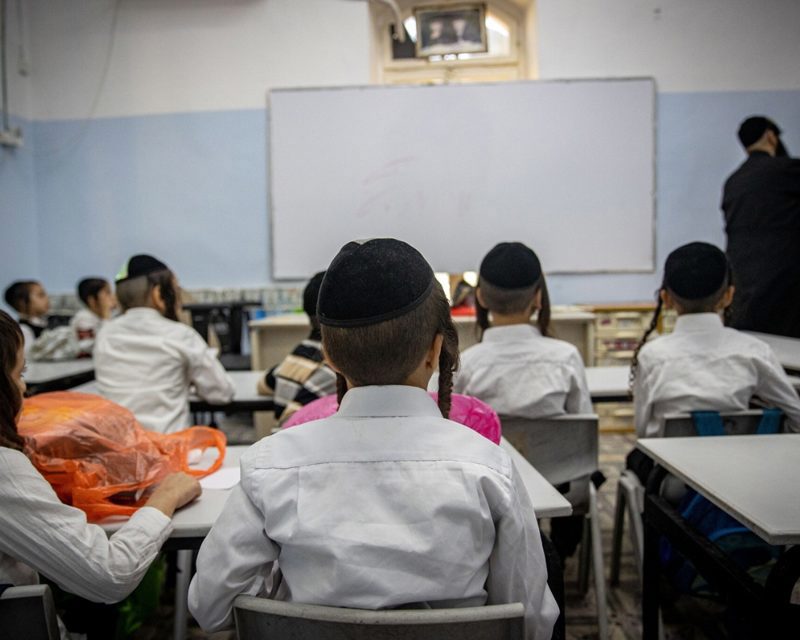

Most people across Israel are incredibly well educated and value their learning, with students able to leave school when they are 15 years old. However, Jewish people living in Israel over the age of 25 have an average of 11.6 years of education each, making them one of the most educated religious groups on the planet.
20. Hong Kong: Getting a higher education is a wish so many here share
- Population: 7.49 million
- Education Index: 0.88
- Literacy Rate: 93.5%
- School Achievement: 66.66%
Although schooling is free across Hong Kong, parents have to pay if they want their children to start preschool. At least, they most commonly do. There are also vouchers for parents from the government that can help certain parents before children must enroll at school at six years old. That’s where they’ll stay for the next 12 years.
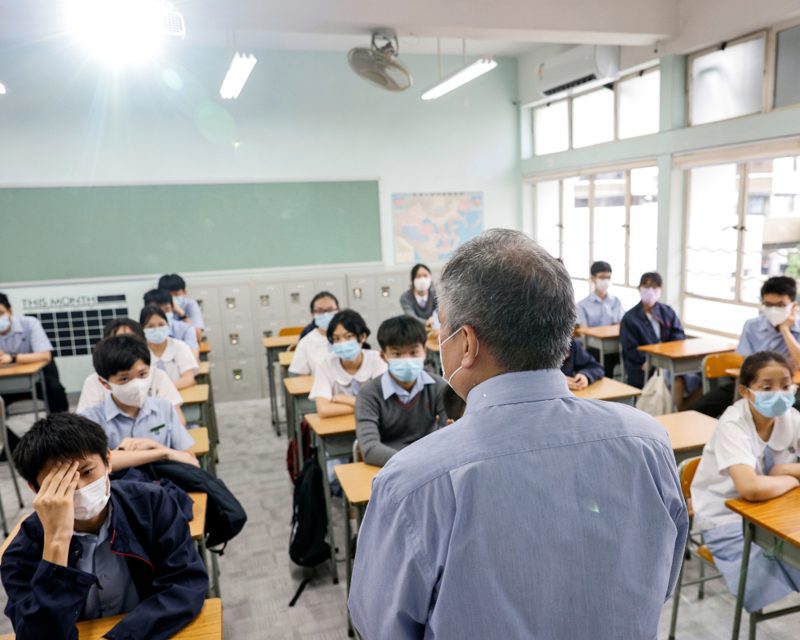

That’s right; students in Hong Kong can only leave when they are 18 years old, with a school achievement percentage of 66.66% going to show just how many people enroll in higher education. Although most apply for college in Hong Kong, thousands of students opt to study elsewhere around the world, most commonly in Australia or the US.
19. Estonia: School here immediately helps students learn how to be themselves
- Population: 1.32 million
- Education Index: 0.88
- Literacy Rate: 99.82%
- School Achievement: 27.97%
Education in Estonia is nothing new. In fact, it’s been around since the 13th or 14th century, with the first university opening in 1632. Nowadays, students instantly get to show their personalities and uniqueness, as these are two leading factors when it comes to the nation’s preschools. From there, it’s all about proving what you can do.


Students can be homeschooled, but it’s rare, with most opting to use Estonia’s nine-year comprehensive school system. Once this is complete, every student must pass three exams: one about the Estonian language, one in math, and one in a subject of their choice, as well as a creative assignment. Only then can students continue to further their education.
18. Canada: The nation has long been praised for its colleges and universities
- Population: 38.86 million
- Education Index: 0.89
- Literacy Rate: 99%
- School Achievement: 20.56%
Even though it’s the second-largest country in the world – losing the top spot to Russia – Canada is largely uninhabited, which is why it has a population of just 38.86 million. The nation has long been praised as one of the highest educated nations, especially with its famous universities. Still, it ranks 17th in terms of education index in 2023.
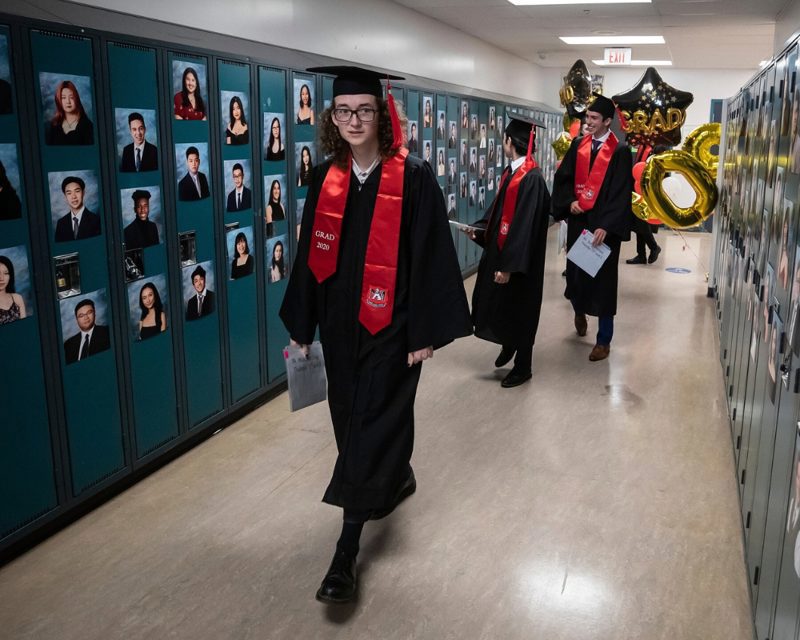

School is mandatory for everyone from six to 18 years old, with much of Canada’s educational system focusing on diversity and safety for all of its students. Higher education is a big part of the Canadian way of life, with an estimated 57% of people aged between 25 and 64 years old holding a university degree or college diploma.
17. Switzerland: Each canton is in charge of its own school system
- Population: 8.8 million
- Education Index: 0.9
- Literacy Rate: 99%
- School Achievement: 31.93%
When it comes to school systems, Switzerland might have one of the most unique in the world. After all, it’s so diverse because each school system is controlled largely by each canton, aka the different states found across the nation. However, most elementary schools state that students must enroll by the time they are six years old.


Once people complete elementary school, pupils are split into different groups that depend on what they want to do for their career and their academic abilities. Higher education is offered after nine years of mandatory schooling, with Switzerland currently home to 12 universities, with ten managed by the cantons and the other two federally controlled.
16. Lithuania: Students don’t typically pay for extracurricular activities across the nation
- Population: 2.71 million
- Education Index: 0.9
- Literacy Rate: 99.82%
- School Achievement: 25.47%
Coming in at number 16 of the most educated countries in 2023 is none other than Lithuania. The nation is known to have a smaller population than many others in the world, currently housing 2.71 million people, but that hasn’t stopped Lithuania from earning an impressive education index of 0.9. That’s not all.


Having a literacy rate of 99.82% and a school achievement percentage of 25.47% really helps to boost the country through the ranks. Here, students must stay in school until they are at least 16 years old after starting when they are seven. Thankfully, education across Lithuania is free, with many offering free extracurricular activities to students.
15. Belgium: Schools here can be run by one of three organizations
- Population: 11.69 million
- Education Index: 0.9
- Literacy Rate: 99%
- School Achievement: 27.84%
It can be tough to know what you want to do with your life at a young age. That’s why Belgium places a lot of emphasis on writing and basic math skills for its elementary school students, leaving a lot of room for people to learn about a broader range of subjects as they go through the years.


Here, schools can be organized into three groups. The first are those owned by the community. The second are subsidized public schools that are owned by provinces or municipalities. The third are free schools, which are linked to the Catholic church, with the latter being the largest in terms of the number of schools and number of students.
14. United States: Private schools don’t follow the same rules as public ones
- Population: 340.46 million
- Education Index: 0.91
- Literacy Rate: 79%
- School Achievement: –
If there’s one thing many of us have learned, it’s that the education system across the US might be some of the most diverse. After all, it’s made up of private and public schools, as well as people being homeschooled. In 2013, 87% of school-aged students were enrolled in state-funded public schools, with 10% attending private schools.
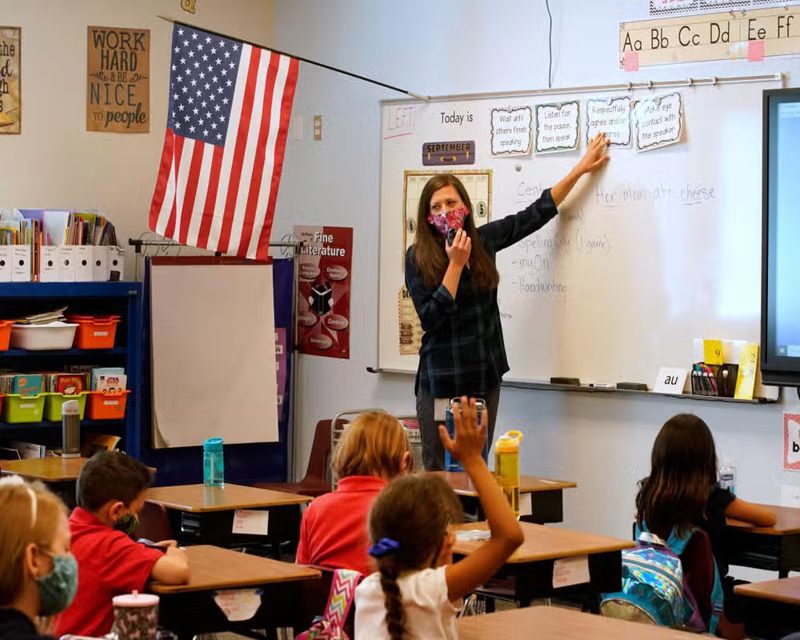

The remaining 3%? They were homeschooled. Even though most of the funding comes from local and state governments – $1.3 trillion, to be precise – private schools are free to write their own staffing policies and choose their own curriculum, making them a popular choice for students who already have a particular career in mind for the future.
13. Slovenia: Learning multiple languages is just a part of school here
- Population: 2.12 million
- Education Index: 0.91
- Literacy Rate: 99.71%
- School Achievement: 20.47%
Depending where a school is found across Slovenia will depend on how the classes are taught and run. Up until the fifth grade, students are taught by one teacher who will teach basic skills, such as reading, counting, and writing, as well as their native language – either Italian, Slovenian, or Hungarian, depending on the location.
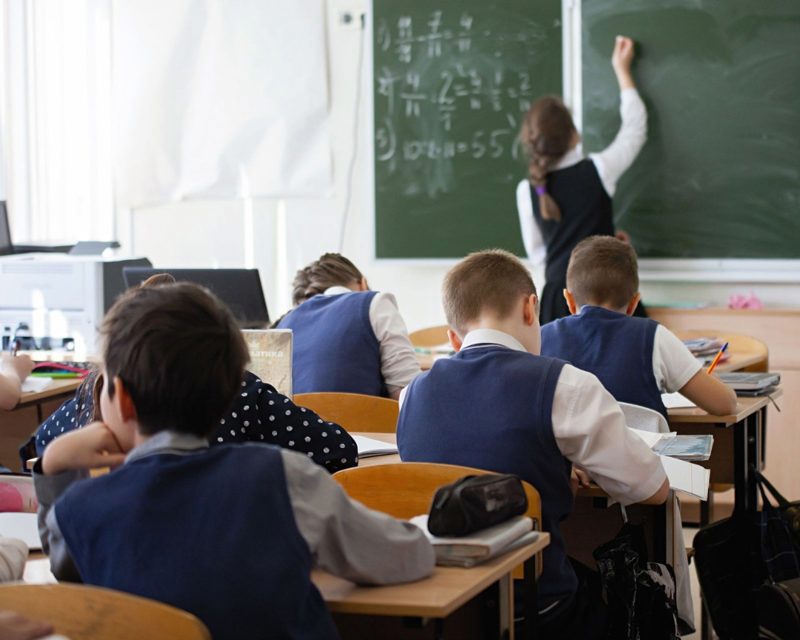

First grade also marks the first year students in Slovenia learn a foreign language, with most schools picking English. Students must stay enrolled in school until they are at least 14 or 15 years old, with Slovenia currently offering three public universities for those looking to further their education, just like so many before them.
12. Netherlands: Education here is focused on individual needs and not mass
- Population: 17.62 million
- Education Index: 0.91
- Literacy Rate: 99%
- School Achievement: 25.15%
The nation hasn’t quite reached the halfway point, but the Netherlands does have just over 43% of 25 to 64-year-olds with a higher education degree. As well as having one of the most educated populations, the nation also has an incredibly high literacy rate at 99%, proving just how well the school system services its residents.
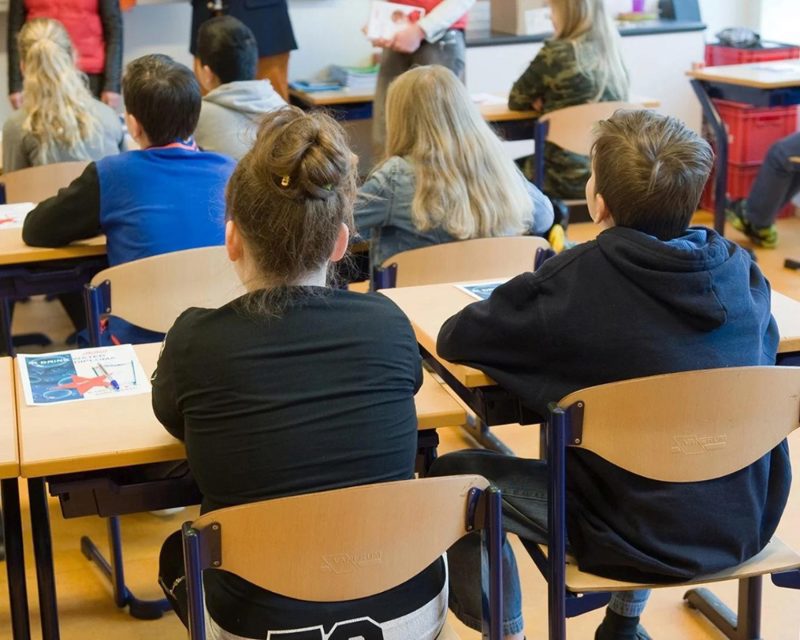

One thing the Netherlands does a little differently from most other nations is focusing on division. This means that education is oriented toward the backgrounds and needs of each individual student. This means that plenty of schools are split to match people’s educational levels, as well as offering religious and neutral schools for people from different backgrounds.
11. Sweden: Most schools here teach a wide range of subjects to all students
- Population: 10.61 million
- Education Index: 0.92
- Literacy Rate: 99%
- School Achievement: 17.86%
One thing that many parents dread is having to pay for childcare, especially before their children start school. That’s where Sweden stands out for all the right reasons, as preschool here is actually free for all families. Then, at six years old, students must enroll in school until they are at least 15 or 16 years old.
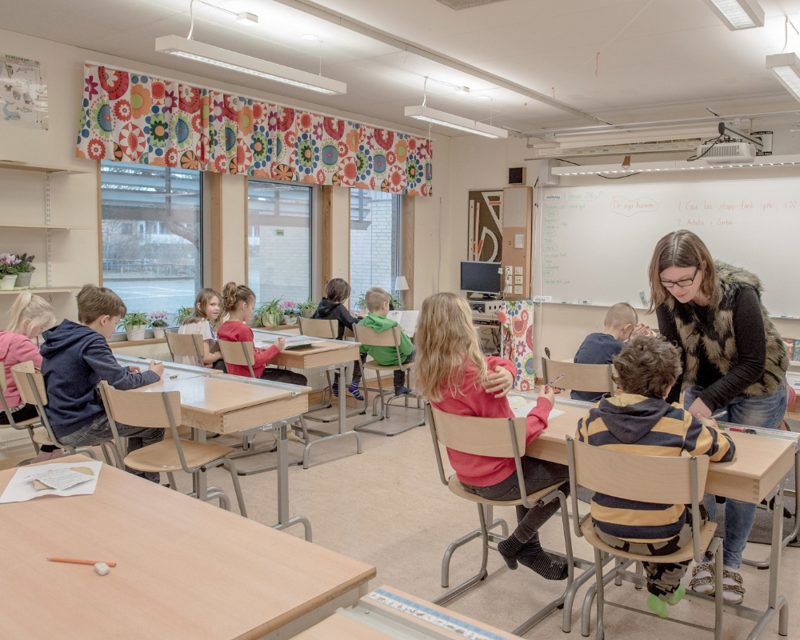

Even though there are some private schools found in Sweden – known as independent schools – most schools here are actually government-funded, where students are mostly taught the same wide range of subjects, apart from which languages are chosen. The result? Sweden is almost one of the top ten educated countries out of all 195 in the world.
10. Singapore: Rigorous testing and discipline are all a part of the parcel here
- Population: 6.01 million
- Education Index: 0.92
- Literacy Rate: 96.77%
- School Achievement: 71.37%
The first in the top ten most educated countries across the globe comes in the form of Singapore. With a population of over 6 million, the nation has an impressive education index of 0.92. One of the main reasons that this country shines when it comes to its educational system is the nation’s centralized learning.
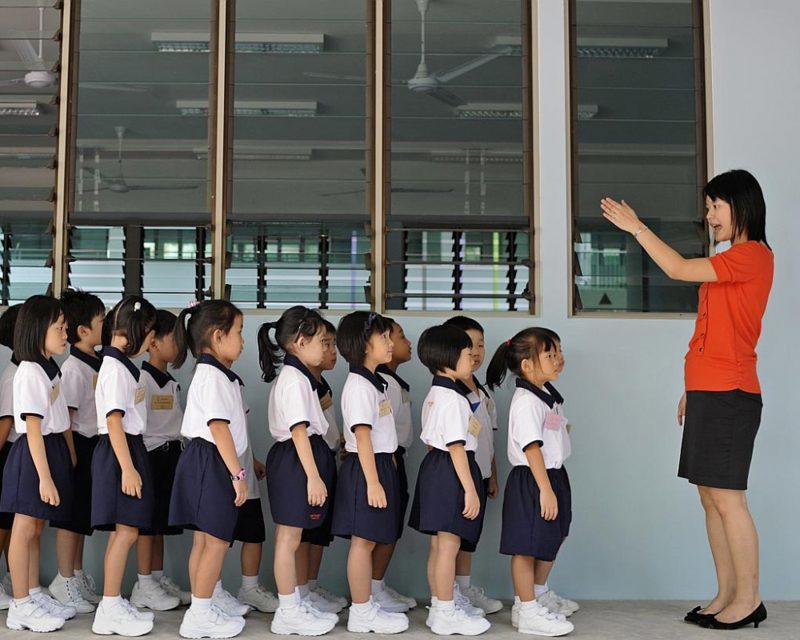

A lot of emphasis here is put on someone’s academic achievement, resulting in a school achievement percentage of 71.37% – the highest of any country in the world. Discipline and hard work are the two leading parts of all education across Singapore, with rigorous testing and teaching methods helping to instill discipline in students of all ages.
9. Ireland: The nation is known to support students and teachers in any way that it can
- Population: 5.06 million
- Education Index: 0.92
- Literacy Rate: 99%
- School Achievement: 30.03%
On the other end of the scale is Ireland. Coming in ninth out of every country in the world in terms of its educational system, the nation places a lot of focus on meeting the needs of every individual across the school system. Ireland is known to offer a host of courses and opportunities to students, but that’s not all.


Ireland offers people the chance to choose more vocational courses, as well as top-tier universities for those looking to earn their degree. One of the biggest focuses is on learning how to problem solve and critical thinking. As a result, teachers tend to be highly trained and often have a lot of support in their jobs.
8. Denmark: Each municipality is in charge of how its schools work
- Population: 5.91 million
- Education Index: 0.92
- Literacy Rate: 99%
- School Achievement: 27.51%
The educational system and rankings in Denmark almost perfectly match Ireland, even down to the population. However, it just edges into eighth place when it comes to the nations with the best education. The education index of 0.92 is one thing, but schools in Denmark are actually highly decentralized compared to many other countries.
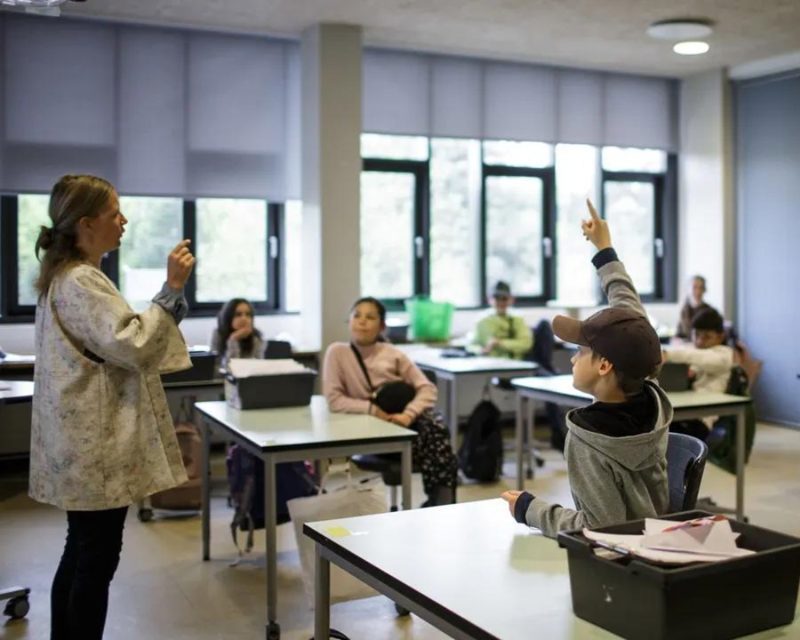

That’s because each municipality is in control of its own schools. Still, some things are standard across the nation. In Denmark, a lot of emphasis is put on inclusion and social equality, largely thanks to its diverse population. Plus, schools here want to ensure all students know how to think independently and are as creative as possible.
7. Australia: Only 60% of students attend government-run schools
- Population: 26.47 million
- Education Index: 0.92
- Literacy Rate: 99%
- School Achievement: 21.38%
Like some other nations, each state in Australia is in charge of its schooling system, meaning basic things differ slightly from place to place. Students typically start school between four and six years old, with some able to leave as early as 15 years old, while others have to wait until they turn 17 years old.
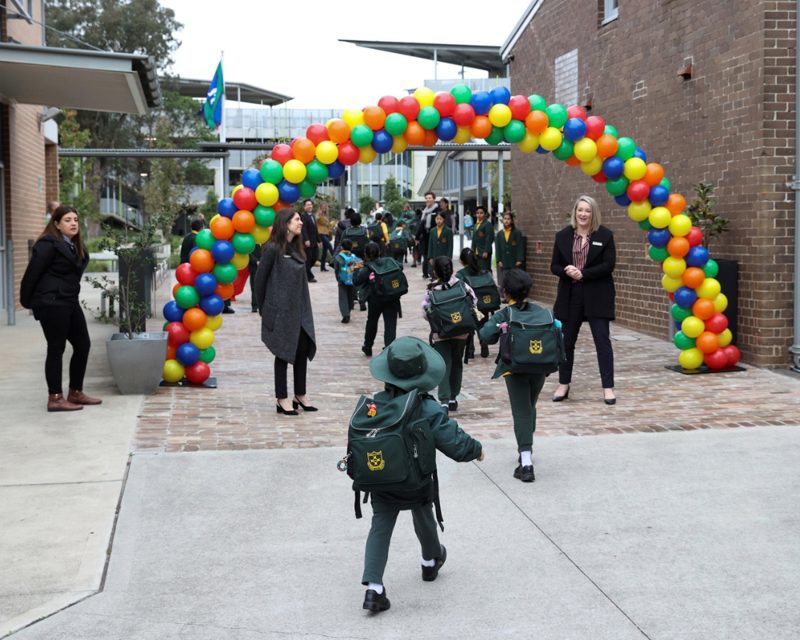

Amazingly, only 60% of students attend government schools, with 40% attending non-government schools, like private schools. Student loans help people attend higher education courses, and these don’t have to be paid back until someone earns over a certain amount from their future career. Of course, plenty of international students also make Australia their home for their extended studies.
6. United Kingdom: Options are pretty open for students and their education
- Population: 67.74 million
- Education Index: 0.93
- Literacy Rate: 99%
- School Achievement: 21.95%
Just missing out on a top-five placement of the most educated countries in the world is the United Kingdom. Made up of England, Wales, Scotland, and Northern Ireland, each nation is responsible for controlling its own schooling system. For many years, students were able to leave school when they were 16 years old, but that’s since changed.
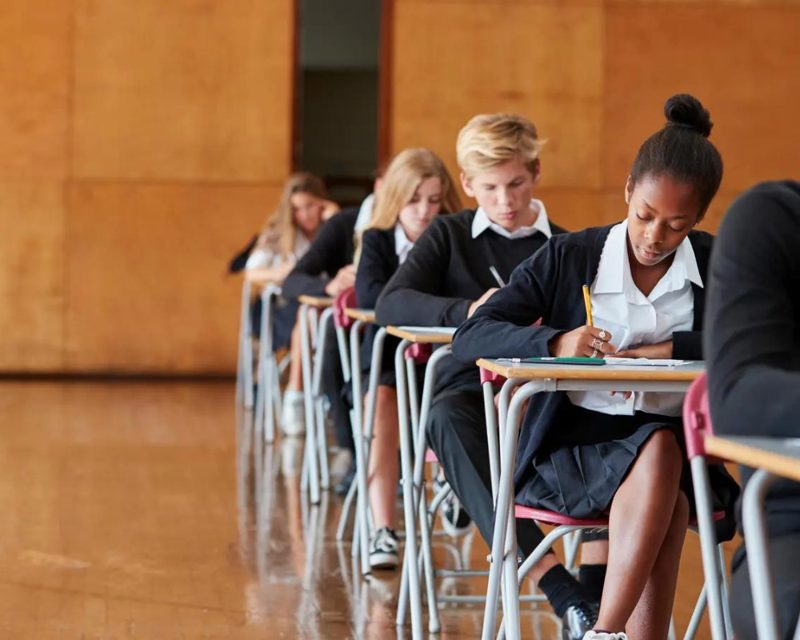

No, students have to stay in higher education – either at school or college – until they are at least 18 or look for an apprenticeship. The nation’s 0.93 education index certainly leaves an impressive mark, but the number of famous universities found across the UK only helps to boost its rankings even more than ever before.
5. Norway: The nation believes everyone has the right to a free education
- Population: 5.47 million
- Education Index: 0.93
- Literacy Rate: 100%
- School Achievement: 27.49%
Several countries offer a host of ways for people to get an education, with most relying on a mixture of public and private schools. However, Norway’s private school sector is incredibly small, with most being funded by organizations or parents. Instead, the country believes in creating equal learning opportunities for as many students as possible.
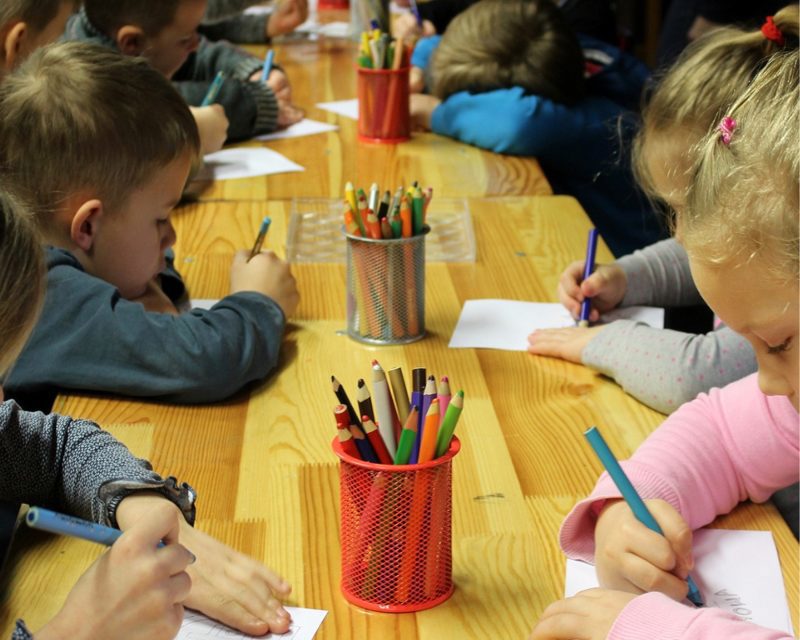

As a result, Norway has an incredible literacy rate of 100% and a high education index, currently sitting at 0.93. Here, it is a right for elementary and the start of secondary schools to be offered for free to all citizens, with people getting the choice to leave school when they turn 16 years old.
4. New Zealand: Asking questions is often highly encouraged at schools across the nation
- Population: 5.24 million
- Education Index: 0.93
- Literacy Rate: 99%
- School Achievement: 17.39%
One interesting thing about New Zealand is that most students don’t have to wait until the start of a new school year to join school. Instead, plenty of schools offer pupils the chance to join the day they turn five years old, meaning someone could enter the school year when it’s already halfway through. Of course, they don’t have to.
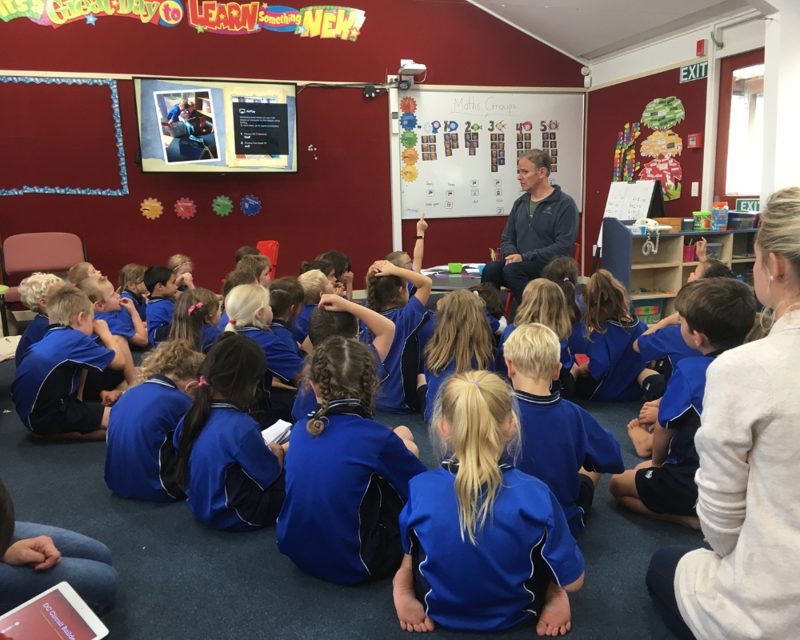

New Zealand does things a little differently when it comes to teaching, as schools are known to encourage inquiries from students to help them learn. Student engagement is also a big part of life here, with teachers being highly trained in their chosen field and often largely supported by training opportunities and facilities at their disposal.
3. Iceland: Students here are encouraged to always further their education
- Population: 375,318
- Education Index: 0.93
- Literacy Rate: 99%
- School Achievement: 21.11%
Iceland has the smallest population of any country in the top ten of the most educated, but if there’s one thing people have learned about the nation, it’s the fact they have always done things a little differently. Thankfully, that has more than paid off when it comes to its educational system, seeing it land third place.
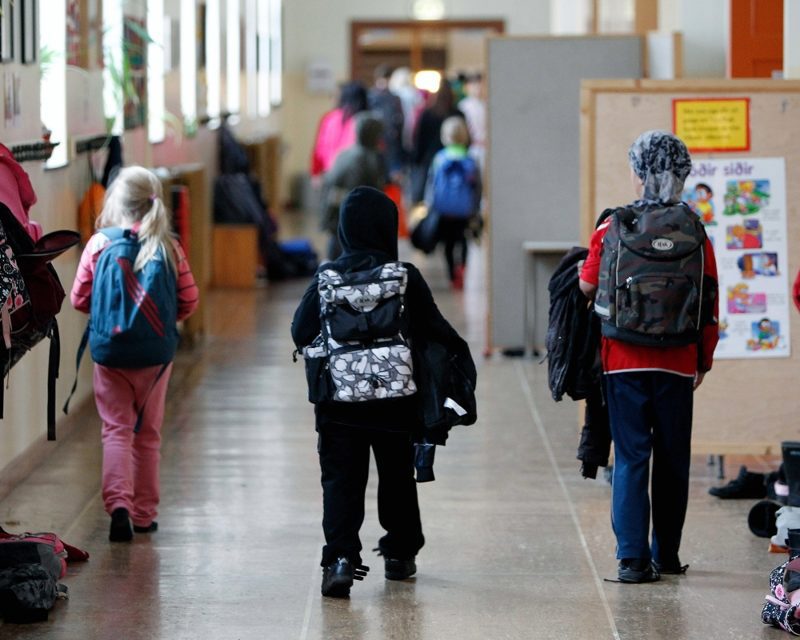

An educational index of 0.93 has earned Iceland its third spot, but things don’t end when students walk out the doors at the end of their school education. Instead, it’s largely encouraged for adults to continue their education through the rest of their lives. The end result? A school achievement percentage of 21.11%.
2. Finland: Money doesn’t matter when it comes to getting an education here
- Population: 5.55 million
- Education Index: 0.93
- Literacy Rate: 100%
- School Achievement: 25.29%
Often named one of the best countries for its education system is none other than Finland. While it just misses out on the top spot with its education index, 0.93 is still a more than impressive final result. One of the reasons is how private schools work across the nation, as they have to follow the same educational plan.
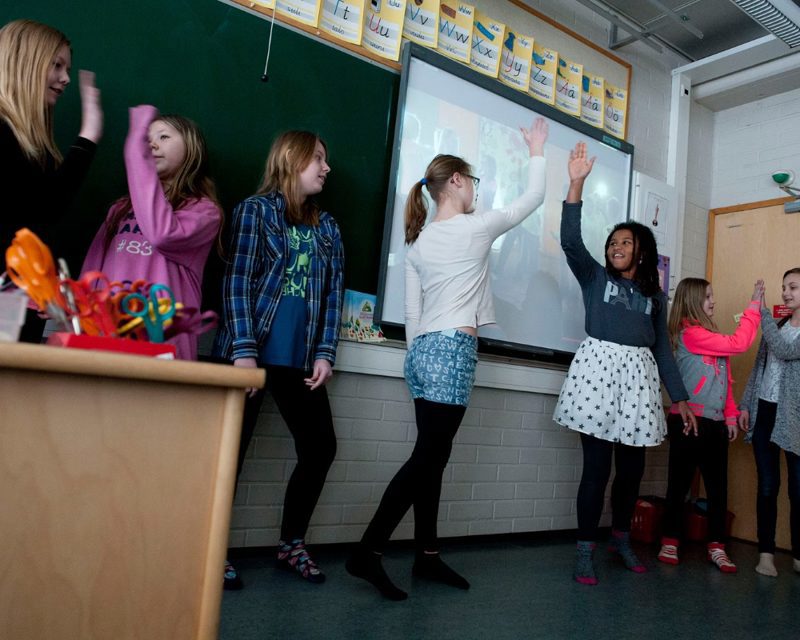

That’s to stop people with more wealth from getting a better education and helps to emphasize the equality Finland wants to bring to life. It also means that everyone has access to the same learning opportunities, regardless of their socio-economic backgrounds, with teachers here being some of the best trained and most respected in the world.
1. Germany: Hitting high grades sees this nation take the top spot
- Population: 83.29 million
- Education Index: 0.94
- Literacy Rate: 99%
- School Achievement: 22.91%
When it comes to the most educated country in the world, Germany currently holds the top spot. With a literacy rating of 99%, a school achievement percentage of 22.91%, and an education index of 0.94, it might not be hard to see why. Amazingly, the federal government plays little part in most schools across Germany.


Instead, it’s largely down to each German state as they all decide their own educational policies. Most of the time, Germany is hitting well above the average for math, sciences, and literacy, showing just how well the schools bring their education to life. It seems the nation has more than earned its spot at the top.

